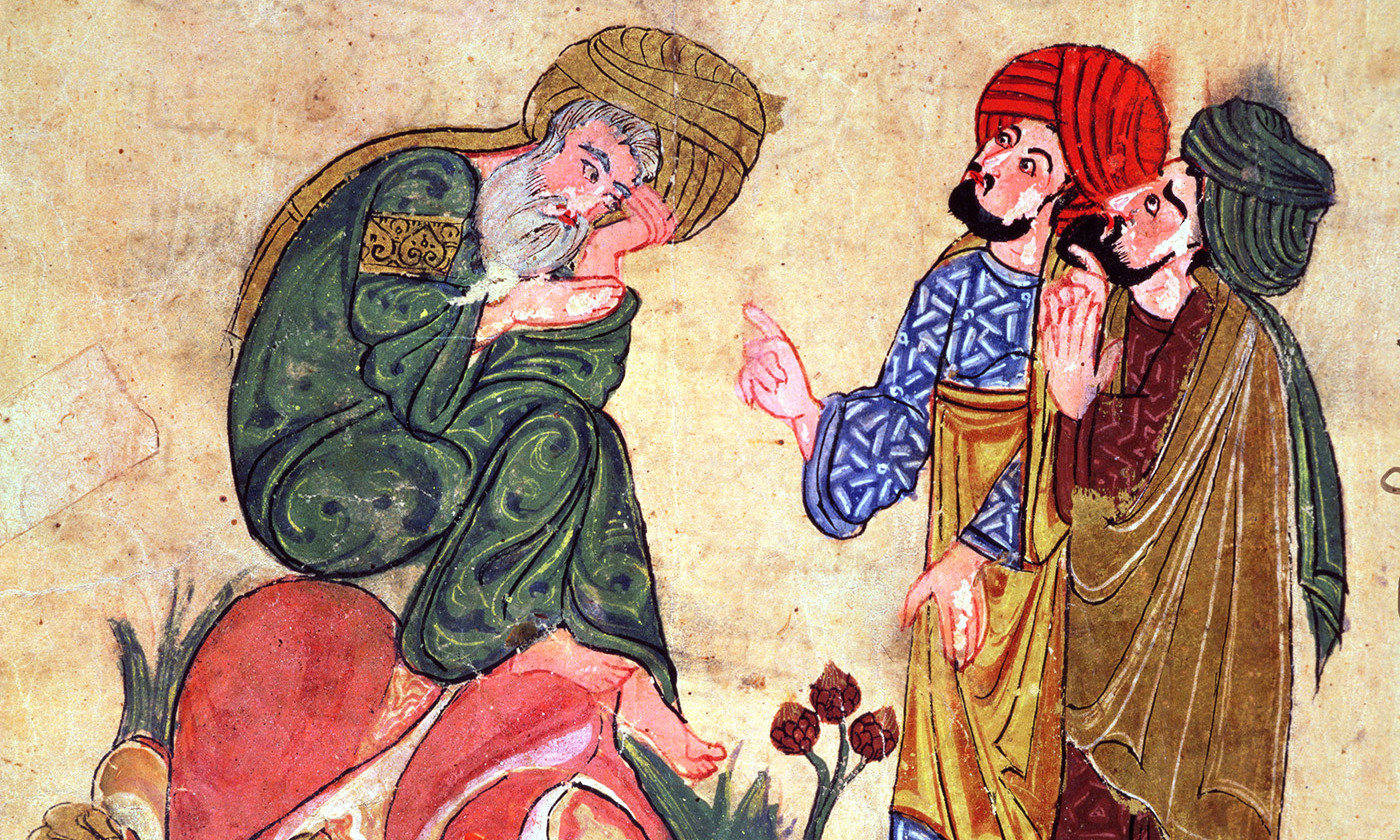In philosophy, the Muslims eagerly studied Plato, Aristotle, and the Neoplatonists. Like the Byzantines and the western Europeans, they used what they learned to enable them to solve theological problems.
These focused on the nature and the power of God and his relationship to the universe, or on the distinctions to be drawn between the apparent (outer) meaning and the true (inner) meaning of the Koran. Al-Ghazali (d. 1111), having written a Refutation of Philosophy, became a Sufi mystic for a decade before returning to his desk to write an autobiography and more theological works, all Sunni.
The great Spanish Muslim Averroes (1126-1198) strove to reconcile philosophy and the Koran. Averroes’s commentaries on Aristotle, translated from Arabic into Latin, were available to the Christian West by the 1240s. Thus the Muslims came to share with the Byzantines the role of preserver and modifier of the classical works of philosophy and science. In the twelfth century and later, when the West was eager for ancient learning, it was the Muslims as well as the Greeks who could set it before them.
Indeed, the process had begun even earlier in Cordova. In 854 a Spanish Christian complained that his fellow Christians were irresistibly attracted by Muslim culture:
My fellow Christians delight in the poems and romances of the Arabs; they study the works of Muslim theologians and philosophers, not in order to refute them, but to acquire a correct and elegant Arabic style. Where today can a layman be found, who reads the Latin Commentaries on the Holy Scripture? Who is there that studies the Gospels, the Prophets, the Apostles? Alas! The young Christians who are most conspicuous for their talents have no knowledge of any literature or language save the Arabic; they read and study Arabian books with avidity, they amass whole libraries of them at immense cost, and they everywhere sing the praises of Arabian lore.
The Arabic poems of which the Spaniard spoke portrayed life in the desert, with its warfare and hunting, its feasts and drinking bouts. Love was a favorite subject. Composition was governed by a strict code of convention; it was customary, for example, for the poet to praise himself, but not possible for him freely to portray human character. Still, much understanding of fundamental human experience shines through.
Arabic love poetry, especially as developed in Spain, deeply influenced the poets (called troubadours) across the Pyrenees in Provence, in the south of France. Earthly love became an important element of medieval literature. The troubadours’ songs spread to Germany, where the minnesinger adopted the convention. The troubadour created an interest in the theme of courtly love, or highly mannered and elegantly elaborately formal relations between men and women, and in the fourteenth and fifteenth centuries troubadour literature helped preserve and, for the aristocracy, elevate chivalric attitudes. Some of the greatest masterpieces of Western love poetry thus find their ancestry in the songs of the Muslims of Spain.
But love was not the only theme of Arabic verse. The famous blind Syrian poet al-Ma’arri (979-1057) lamented human helplessness in the face of the vicissitudes of life, sometimes in verses of a haunting beauty:
My friend, our own tombs fill so much space around us, imagine the space occupied by tombs of long ago.
Walk slowly over the dust of this earth;
its crust is nothing but the bones of men.
Besides poetry there is much interesting autobiography and excellent history in Arabic. Fiction is of a limited sort only—sad misfortunes of a pair of lovers; exciting incidents of urban life in the capital, with the caliph and his chief minister, the vizier, participating; the adventures of a rogue. These stories were collected in the celebrated Arabian Nights between 900 and 1500. Stories of Persian, Indian, and Jewish origin are included, as well as some that derive from Greek and Hellenistic works. Thus Sinbad the Sailor’s famous roc with its enormous egg came from the Greek romance of Alexander, and the Odyssey supplied the adventure with the blinded giant.
Deeply appreciative of secular music and dancing, the Arabs in the early Islamic period seem to have preferred the role of spectators to that of performers, most of whom were slaves or former slaves. Stringed instruments like lutes, as well as whistles, flutes, and drums, were popular in the Islamic world. Many musical words we take for granted derive from Arabic. Lute, tambourine, guitar, and fanfare are all of Arabic origin.
From the Muslims of Spain across the Pyrenees into France and thence to the entire western European world came not only the poetry of courtly love but also the instruments the singer played as he sang of his beloved. Through Sicily and Spain came Greco-Roman and Muslim science, philosophy, and art. When considering the contributions of the Byzantines and the Muslims to the culture of Western society, historians are altogether justified in saying that much light came from the East.

